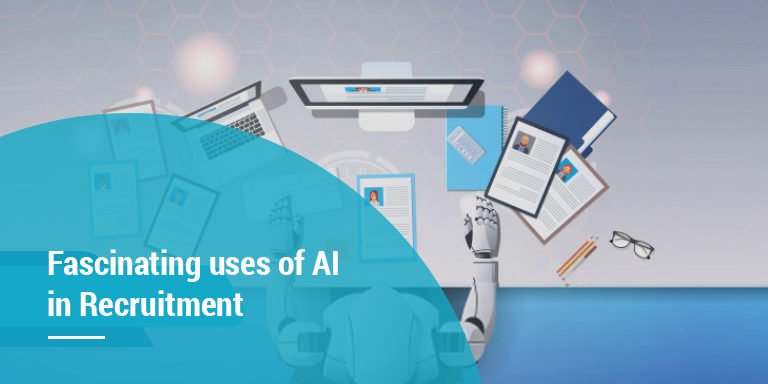Use of AI in Recruitment

Team Kritikalhire
May 16th, 2023
Traditionally Human Resources has always been considered a ‘people-centric’ activity that requires physical human involvement. However, the complexities of hiring and retaining talent have given rise to Human Resources executives embracing technology, analytics, and employee centricity. Here, we evaluate the benefits and challenges of replacing the human touch using power technology.
Sharon Monteiro writes in her article ‘Quick guide to an effective recruitment process’ that the primary goal of the Human Resources function is to focus on the growth of the employees, the most critical asset of an organization. This starts with Recruitment, where any organization wants to hire the best candidates in the shortest time with a minimum budget. She adds that every organization will have its unique, smooth, and amicable recruitment process, showcasing how the company values its employees.
Sharon, suggests that to have a systematic recruitment process, three key elements should form a part of it: Automation, Data-driven decision, and employee referrals. Elaborating on critical vital features, while Automation saves time, energy, and recruitment costs, data gives pointers to clogs in the process, and employee referrals motivate existing employees with a sense of belonging to be a part of the recruitment process.
Technology, powered by AI in this field, is an emerging wave for talent management having the potential to help organizations find better job candidates faster, provide more impactful employee development, and promote retention through more effective employee engagement, says Jessica Kim-Schmid, and Roshni Raveendhran in their article in HBR - Where AI Can - and Can’t - Help Talent Management.
The use of AI comes with advantages in various parts of the recruitment journey. HR executives must evaluate their challenges and adopt the best AI solution to resolve their pain. AI-powered recruitment tools can reduce bias in hiring, analyze large sets of talent data, communicate with applicants consistently, and give recruiters deep insights to help them make hiring decisions, among other benefits.
Apart from AI easing the recruitment process, Jessica and Roshni list candidate engagement and Targeting and Outreach as two more benefits, whereby AI transforms the employee journey into a hassle-free venture. AI-driven Recruitment helps foster candidate engagement, provide immediate updates to candidate inquiries, schedule interviews, and provide feedback on the hiring status. Moreover, Recruitment through AI can help companies refine their candidate searches and quickly narrow down their desired talent attributes. Using AI in the recruitment and selection process can help to discover, reach, and engage with a focus on finding the best talent. By eliminating well-known recruitment pain points, AI brings the human back into Recruitment.
According to Jon-Mark Sabel, HireVue in ‘AI In Recruiting: What It Means for Talent Acquisition,’ AI also assists in social candidate discovery. There is software that scrapes social and other online platforms to surface passive candidates that may be a good fit for open requisitions. He summarizes that AI in Recruitment is all about prediction. If adequately implemented, it Dramatically improves the quality of hire, time to fill, new hire diversity, and other critical recruiting metrics.
However, it is not that AI does not come with challenges.
As per Jessica and Roshni, AI-driven tools are not one-size-fits-all solutions. AI can be designed to optimize for different metrics and is only as good as the objective it is optimized for. Therefore, to leverage AI’s full potential for talent management, leaders need to consider what AI adoption and implementation challenges they may encounter.
It may also take time for HR executives to accept the results from the AI. Often skepticism creeps in, wherein the executive casts doubts, as it removes the decision control away from them. The sooner it is trusted and adapted, the quicker the evolution and ideas to enhance it further.
HireVue cautions that vendor choice, and the solution is paramount. Solutions should neither be just automation of Excel sheets used nor entrusted in the hands of interns to produce something using calculators or flowcharts.
Concluding his point, HireVue, states; the potential of AI in recruiting is tremendous. But the potential is accompanied by hype, misinformation, and market noise that makes it difficult to discern the genuinely transformative applications of AI. So while some early adore seeing incredible advances in their recruiting processes, platforms, and metrics, most TA teams remain on the sidelines.
References:
- A quick guide to an effective recruitment process, Sharon Monteiro (https://www.peoplehum.com/blog/quick-guide-to-an-effective-recruitment-process)
- Where AI Can — and Can’t — Help Talent Management, by Jessica Kim-Schmid, and Roshni Raveendhran – (https://hbr.org/2022/10/where-ai-can-and-cant-help-talent-management)
- AI In Recruiting: What It Means for Talent Acquisition, By Jon-Mark Sabel, HireVue (https://www.hirevue.com/blog/hiring/ai-in-recruiting-what-it-means-for-talent-acquisition)
Subscribe
The best recruitment industry articles served daily, directly in your inbox.



